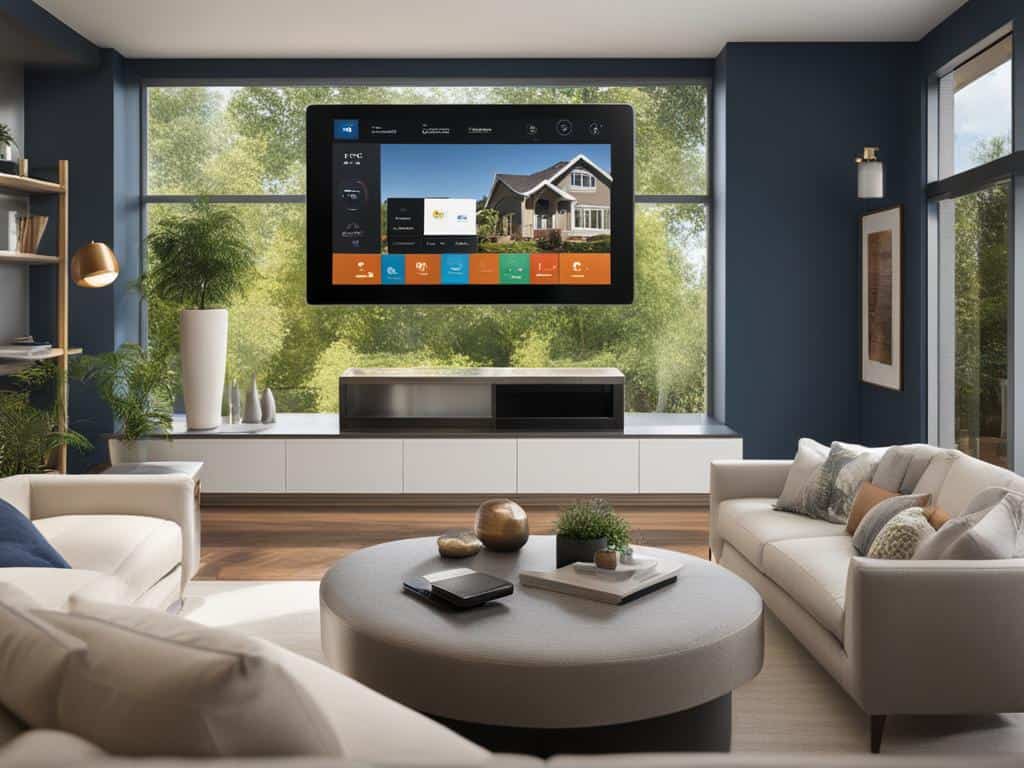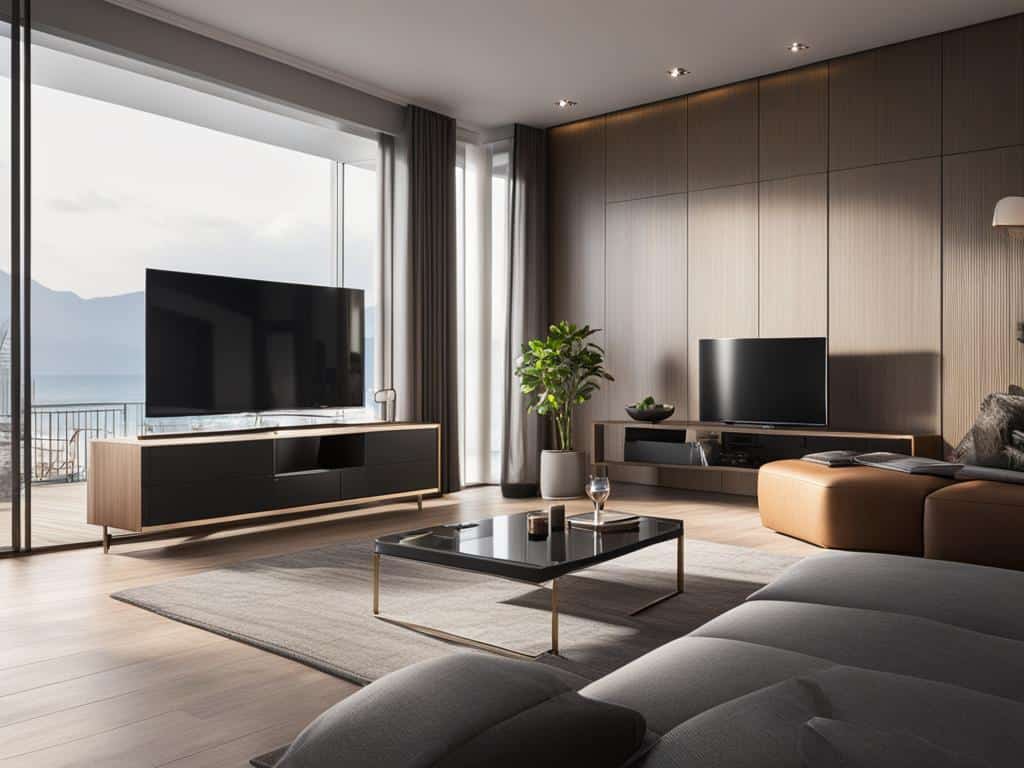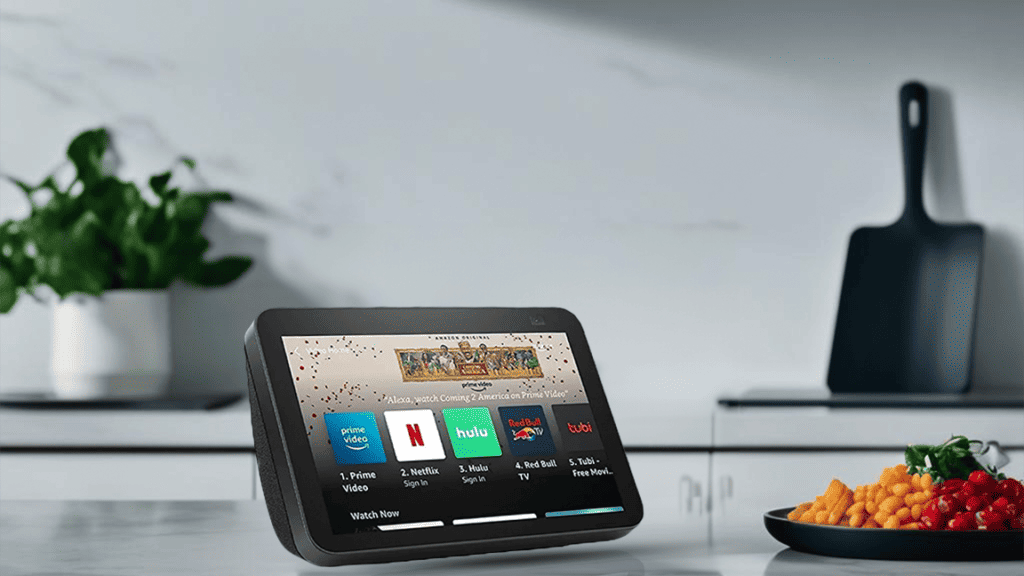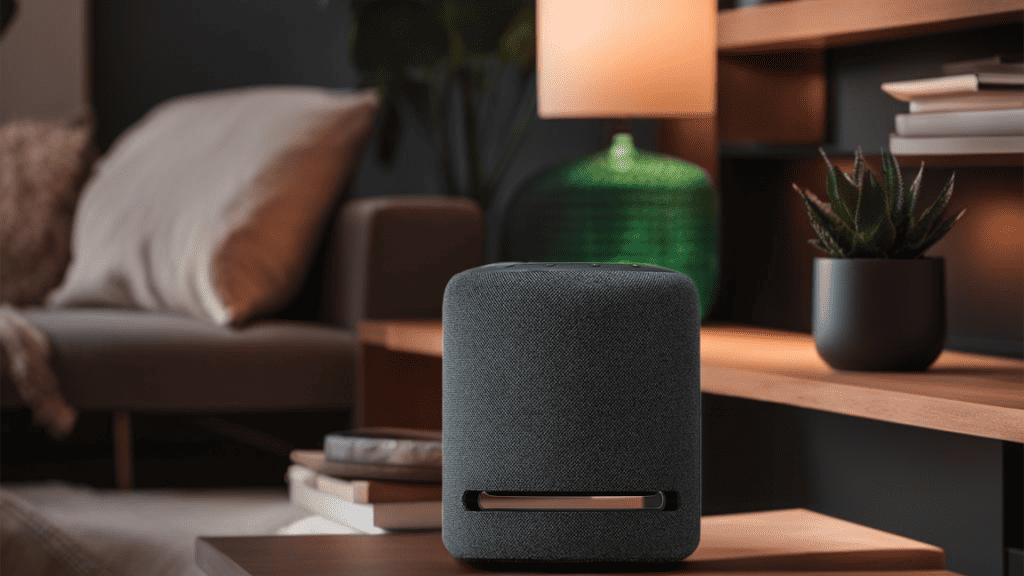In the world of home technology, the terms smart home and home automation are often used interchangeably, but there are key differences between the two. Smart homes are technology-based systems that remotely control and monitor appliances, lights, security systems, and more using advanced technologies like sensors, voice assistants, and AI. Home automation, on the other hand, refers to the process of controlling home systems through a central unit manually or with a remote control device. This article will explore the distinctions between smart homes and home automation to help you make an informed decision about which option is best for you.
Key Takeaways:
- Smart homes and home automation are similar but have fundamental differences.
- Smart homes are technology-driven systems that use advanced technologies like sensors and voice assistants.
- Home automation refers to controlling home systems through a central unit manually or with a remote control device.
- Smart homes offer convenience and customization options, while home automation focuses on centralized control systems.
- Understanding the distinctions can help you choose the option that suits your lifestyle and home.
What Does Smart Home Mean?
A smart home is a revolutionary technology-driven system that offers enhanced convenience and control to homeowners. It allows users to remotely monitor and control various devices and appliances in their homes, making everyday living more efficient and enjoyable.
In a smart home, connected devices play a crucial role in creating a seamless and connected living environment. These devices include thermostats, lights, security systems, entertainment systems, and more. They are designed to be controlled through smartphone apps or voice assistants like Google Home or Amazon Alexa, providing users with the flexibility to manage their homes from anywhere.
One of the key advantages of a smart home is remote control. With the power of smartphone apps or voice commands, users can effortlessly control and customize their home environment. Whether it’s adjusting the thermostat before arriving home, turning off lights that were accidentally left on, or even checking security cameras while away, a smart home offers unparalleled convenience and peace of mind.
Customization is another exciting aspect of smart homes. Users can personalize various settings and preferences for different devices, creating a tailored living experience. From setting up automated lighting schedules to adjusting room temperature based on individual preferences, smart homes enable users to customize their living environment to suit their unique needs and lifestyles.
In the table below, you can find a comparison of smart homes and home automation:
| Smart Homes | Home Automation |
|---|---|
| Allows remote control and monitoring of devices | Offers centralized control of home systems |
| Uses connected devices for seamless integration | Relies on a central unit for control |
| Provides convenience and customization options | Enhances efficiency and convenience |
| Offers advanced features like voice control | Can integrate with various devices and technologies |
Note: The table offers a concise comparison of the two concepts, but the article will delve deeper into their differences.
How Does A Smart Home Work?
A smart home operates through a complex network of devices and technologies that work together to provide convenience, control, and automation. At the heart of this network lies the hub, which serves as the central connection point for all the connected devices within the smart home ecosystem.
The hub acts as the bridge between the various devices and the central server, facilitating seamless data transfer and communication. Through the hub, users can monitor and control their connected devices remotely, using a dedicated smartphone app or tablet. Some smart home systems even offer voice command capabilities, allowing users to control devices with simple voice commands.
One of the key functions of the hub is to send and receive data from a central server, typically via the internet. This enables the smart home system to access and process information, such as sensor data, user preferences, and automation schedules, ensuring the smooth operation of the connected devices.
To better understand how a smart home works, let’s take a closer look at how data flows within the system:
- The user interacts with the connected devices through the smartphone app or tablet, issuing commands or requesting information.
- The hub receives the user’s instructions and transmits them to the respective devices.
- The devices carry out the requested actions and send feedback or updates back to the hub.
- The hub relays this information to the central server for storage and processing.
- The central server analyzes the data and, if necessary, triggers automation sequences or generates alerts based on predefined rules or user preferences.
- The processed information is then relayed back to the hub, which in turn updates the user through the smartphone app or tablet.
This continuous data transfer and communication between the hub, connected devices, and central server enable the smart home system to deliver seamless control, automation, and personalized experiences for users.
Having a dedicated hub as the central point of connection ensures a reliable and robust smart home ecosystem. It allows users to conveniently monitor and control their home’s various devices and appliances from a single interface. Whether it’s adjusting the thermostat, turning off the lights, or checking the security cameras, the smartphone app provides easy access and control over the smart home system.
Furthermore, the hub enables users to create automated schedules for their devices. For example, a user can program their smart lights to turn on at a specific time in the morning or set the smart thermostat to adjust the temperature based on their daily routine. These automated schedules add convenience and efficiency to daily tasks, making the user’s life easier and more comfortable.
In the next section, we’ll explore the advantages of embracing a smart home system and how it can enhance various aspects of daily living.
What Are the Advantages of a Smart Home?
Smart homes offer several advantages to homeowners. Let’s take a closer look at some of the key benefits they provide:
Convenience
Smart homes provide unparalleled convenience by allowing users to control their homes remotely from anywhere through their smartphones. Whether you want to adjust the temperature, turn off the lights, or even start your coffee maker, you can do it all with just a few taps on your phone. This level of control ensures that your home is always tailored to your preferences, making your daily life more convenient and effortless.
Energy Efficiency
One of the standout features of smart homes is their ability to promote energy efficiency. With smart devices connected to your home’s systems, they can monitor and adjust energy usage according to preset schedules or even in response to real-time data. For example, smart thermostats can learn your temperature preferences and adjust accordingly to optimize energy consumption. This not only helps the environment but also saves you money on utility bills.
Security
Enhancing the security of your home is another significant advantage of smart homes. With remote monitoring capabilities, you can keep an eye on your property even when you’re not there. Smart security systems allow you to view live camera feeds, receive alerts for suspicious activities, and even lock/unlock doors remotely. This added layer of security brings peace of mind, knowing that you have complete control over the safety of your home and loved ones.
Remote Monitoring
Smart homes enable remote monitoring, allowing you to keep track of your home wherever you are. Whether you want to check if you left the lights on, ensure that your appliances are turned off, or receive notifications for unexpected events like water leaks or smoke alarms, smart home technology has got you covered. With remote access through smartphone apps, you can always stay connected to your home, ensuring that everything runs smoothly even when you’re away.
Automation
Automation features make everyday tasks more efficient and streamlined. Imagine walking into a well-lit home as your smart lighting system turns on automatically or waking up to the aroma of freshly brewed coffee prepared by your smart coffee maker. With smart home automation, you can set up routines and schedules to control various devices, creating a seamless and convenient living experience.
Overall, smart homes not only provide convenience and ease of use but also offer energy efficiency, enhanced security, remote monitoring, and automation of everyday tasks. With the power of technology at your fingertips, a smart home brings comfort and peace of mind to homeowners.
What Does Home Automation Mean?
Home automation refers to the process of controlling home systems through a central unit. It involves the integration and customization of various devices and technologies to improve convenience and efficiency. Home automation systems allow users to control lighting, heating/cooling, appliances, and security systems from a single point of control, either manually or remotely.
One of the key components of home automation is the central unit, which acts as the command center for all interconnected devices. Through the central unit, users can program and manage different control systems, creating a seamless and efficient living environment.
With home automation, you can easily adjust and monitor settings for lighting, temperature, and appliances from the convenience of a centralized control panel. Imagine being able to dim the lights, adjust the thermostat, and turn on your favorite playlist with just a few taps on your smartphone or a voice command to your virtual assistant.
Efficiency is another major advantage of home automation. By automating routine tasks and optimizing energy usage, home automation systems help reduce energy waste and lower utility costs. For example, you can schedule your lights and thermostats to automatically adjust based on your daily routine or room occupancy, ensuring that energy is only used when needed.
Examples of Home Automation Control Systems
Home automation control systems come in different forms and can be tailored to meet specific household needs and preferences. Here are a few examples:
- Smart Lighting Systems: Control and adjust the brightness, color, and timing of your lights with the touch of a button or through voice commands.
- Smart Thermostats: Set and schedule temperature settings for optimal comfort and energy efficiency. Some thermostats can even learn your preferences and adjust automatically.
- Smart Appliances: Monitor and control home appliances like refrigerators, ovens, and washing machines, allowing for greater convenience and energy management.
- Home Security Systems: Arm or disarm your security system, receive real-time notifications and video feeds, and remotely monitor your home’s security status.

Alarm.com Smart Thermostat | HD
- Sleek, color touchscreen display for an engaging customer experience that delivers the next-level of comfort and control
- Easy setup wizard, and local configuration, the Smart Thermostat HD makes installation a breeze
- Can also monitor the health of the heating and cooling system, deliver monthly performance reports, and even alert you to potential HVAC issues right on its display
By integrating these control systems into a centralized home automation platform, you can achieve a more comfortable, convenient, and energy-efficient living space.
Home Automation Efficiency Comparison
| Types of Home Automation | Efficiency Level |
|---|---|
| Lighting Control | High |
| Temperature Control | High |
| Appliance Control | Medium |
| Security System Control | High |
In summary, home automation offers a centralized and efficient way to control various aspects of your home, enhancing convenience, comfort, and energy savings. By integrating devices and technologies into a cohesive system, you can enjoy the benefits of a smart and interconnected living environment.
How Does Home Automation Work?
Home automation is an innovative system that operates through a central unit connected to the home’s electrical system. By leveraging sensors, home automation systems enable real-time monitoring of various variables such as electricity consumption, temperature, and more. This real-time monitoring allows homeowners to achieve desired levels of automation, enhancing convenience and efficiency.
With home automation, users can customize and control various aspects of their homes according to their preferences. Lighting, heating/cooling, curtains, appliances, and security systems can all be easily controlled and automated through the central unit. Whether it’s adjusting the lighting based on the time of day or setting up automated routines for everyday tasks, home automation makes daily life more convenient and streamlined.

Philips Hue Smart Lights
- Enjoy automations, and control from anywhere in the world, and a secure, stable connection that won’t drain Wi-Fi. Use Matter to connect your smart home devices to your Hue smart lighting system. Choose from shades of warm-to-cool white light to enhance your room décor and ambiance; cool white light to focus or energize, warm white light to relax.
- Convenient smart control; Set up voice control in the Hue app and use simple voice commands to control your lights with Alexa or Google Assistant

LIFX Wi-Fi Smart LED Light Bulb
- Ultra bright, but dimmable via voice or app. Full color: Billion possible color steps. RGBW LEDs for richer colors and huge 1500-9000K white range.Iconic industrial design: unique shape maintains whole room light distribution, and looks great in pendants and exposed fixtures.
- Control from anywhere over Wifi, No bridge or hub required, (Uses 2.4GHz).Voice compatible (Alexa, Apple HomeKit / Siri, Hey Google) and simple to set up; screw in, open your preferred app and follow the prompts.
Home automation provides a seamless integration of technology into our living spaces, making our homes smarter and more efficient. By combining the power of sensors, real-time monitoring, and the central control unit, home automation offers a new level of convenience and control for homeowners.
What Are The Advantages Of Home Automation?
Home automation offers several advantages, including convenience, control, customization, automation, and energy-saving. Let’s explore these benefits in more detail:
- Convenience: With home automation, users can control various aspects of their homes through a single point of control, whether manually or remotely. This provides flexibility and ease of use, allowing homeowners to manage their home systems with convenience and efficiency.
- Control: Home automation empowers homeowners with complete control over their home systems. Whether it’s adjusting the lighting, temperature, or security settings, users have the ability to personalize and fine-tune their environment according to their preferences and needs.
- Customization: One of the key advantages of home automation is the ability to customize settings and functions to align with personal preferences. Homeowners can create tailored experiences by programming specific automation routines or schedules, enhancing comfort and convenience.
- Automation: Home automation simplifies daily routines by automating repetitive tasks. For example, setting up automation for the lights to turn on and off automatically during specific times of the day, or programming the thermostat to adjust temperature settings based on occupancy. These automation features save time and energy, making life more efficient.
- Energy-saving: Another significant benefit of home automation is its energy-saving capabilities. Smart home systems can optimize energy usage by monitoring and adjusting lighting, heating/cooling, and other appliances. By automating energy-saving routines, homeowners can reduce their energy consumption and contribute to a more sustainable lifestyle.
Case Study: Monthly Energy Savings with Home Automation
Let’s take a look at a real-world example to understand the energy-saving potential of home automation. The following table showcases the monthly energy savings achieved by a household after implementing a comprehensive home automation system:
| Month | Energy Cost Before Automation ($) | Energy Cost After Automation ($) | Monthly Savings ($) |
|---|---|---|---|
| January | 200 | 150 | 50 |
| February | 190 | 145 | 45 |
| March | 180 | 135 | 45 |
| April | 175 | 130 | 45 |
| May | 195 | 145 | 50 |
As seen in the table above, implementing a home automation system resulted in consistent monthly savings in energy costs. Over the course of five months, the household saved a total of $235, effectively reducing their energy consumption and contributing to long-term cost savings.
Conclusion
In conclusion, when it comes to creating a connected and automated home, it’s important to understand the differences between smart homes and home automation. While they both offer control and monitoring capabilities for your home systems, there are distinct features that set them apart.
Smart homes rely on advanced technologies and connected devices, such as sensors, voice assistants, and artificial intelligence. These technologies allow for remote control and monitoring of appliances, lights, and security systems. On the other hand, home automation focuses on a centralized control system, allowing users to control various aspects of the home, such as lighting, heating/cooling, curtains, appliances, and security systems, through a central unit.
When making a decision between a smart home and home automation, it’s important to consider your individual needs and preferences. Smart homes offer convenience, customization, and energy efficiency, while home automation provides centralized control and automation features. Understanding the advantages and distinctions discussed in this article will help you make an informed decision about which option best suits your lifestyle and home.
FAQ
What is the difference between a smart home and home automation?
Smart homes are technology-based systems that remotely control and monitor appliances, lights, security systems, and more using advanced technologies like sensors, voice assistants, and AI. Home automation, on the other hand, refers to the process of controlling home systems through a central unit manually or with a remote control device.
What does a smart home mean?
A smart home is a technology-driven system that allows users to remotely control and monitor various devices and appliances in their homes. It involves connected devices like thermostats, lights, and security systems that can be controlled through smartphone apps or voice assistants like Google Home or Amazon Alexa.
How does a smart home work?
The heart of a smart home is a hub, which acts as the central connection point for all the connected devices. The hub communicates with each device, sending and receiving data from a central server via the internet. Users can monitor and control these devices through smartphone apps or tablets. Some systems also have voice command capabilities.
What are the advantages of a smart home?
Smart homes offer several advantages to homeowners. They provide convenience, allowing users to control their homes remotely from anywhere through their smartphones. Smart homes also promote energy efficiency by monitoring and adjusting usage according to preset schedules. Additionally, they enhance security by enabling users to monitor their homes remotely through cameras and receive alerts for suspicious activities.
What does home automation mean?
Home automation refers to the process of controlling home systems through a central unit. It involves the integration and customization of various devices and technologies to improve convenience and efficiency. Home automation systems allow users to control lighting, heating/cooling, appliances, and security systems from a single point of control, either manually or remotely.
How does home automation work?
Home automation works by activating home functions through a central unit connected to the home’s electrical system. Sensors enable real-time monitoring of electricity, temperature, and other variables, allowing for desired levels of automation. Home automation systems can be customized to control lighting, heating/cooling, curtains, appliances, and security systems. Users can set up automation based on specific events or routines, making daily tasks more convenient and efficient.
What are the advantages of home automation?
Home automation offers several advantages, including convenience, control, and customization. With home automation, users can control various aspects of their homes through a single point of control, whether manually or remotely. This provides flexibility and ease of use. Home automation allows for customization of settings and functions according to personal preferences. Additionally, automation features save time and energy by streamlining daily routines and optimizing energy usage.





